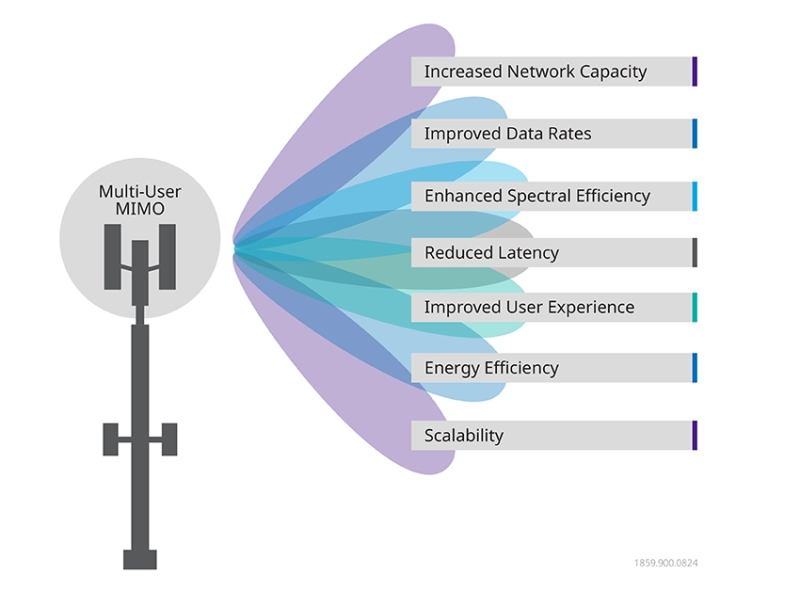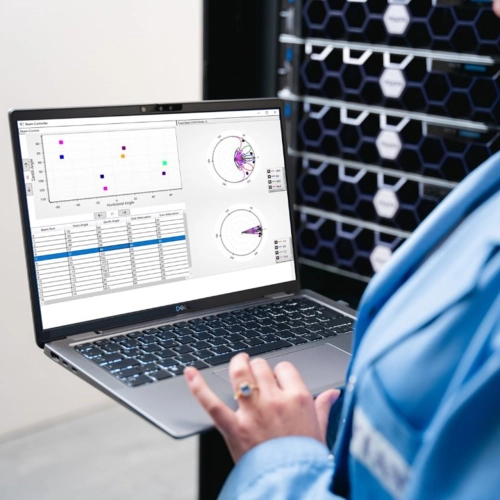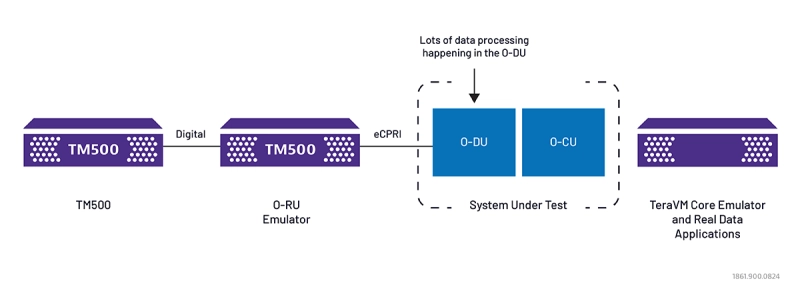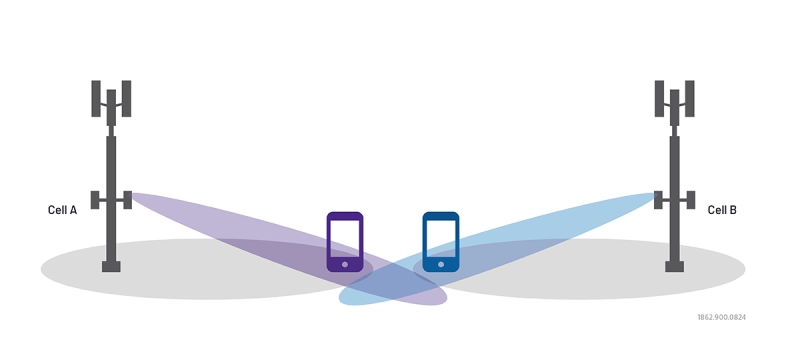MU-MIMO Test
Reach peak efficiency for 5G networks
Why MU-MIMO?
The combination of capacity, bandwidth, and speed required to ensure the promise of 5G makes efficient resource utilization essential. Multi-user MIMO (MU-MIMO) has become a key enabler of this transformation by allowing the same spectrum to be shared among users without sacrificing performance.
Learn more about MU-MIMO benefits and challenges.
MU-MIMO Testing: Making an Impact on QoS
The challenges inherent to MU-MIMO validation, deployment, and operation underscore the balance between high QoS expectations and the growing demand for high-speed, low-latency communications. To provide efficiency improvements through MU-MIMO integration, the base station must have accurate channel information for each discrete user while accounting for interactions between complex gNB scheduling.
Shifting comprehensive MU-MIMO test and validation processes upstream through a combination of emulation, dynamic channel modeling, and OTA testing is the best way to proactively impact QoS while minimizing unnecessary rework and delays.

How VIAVI Delivers MU-MIMO Efficiency
Validation in the lab is the key to realizing the efficiency benefits of MU-MIMO in the field. The industry-leading VIAVI TM500 Network Tester provides an ideal platform for advanced multi-carrier MU-MIMO testing and validation, with dynamic digital channel modeling and fully integrated UE emulation. With digital spatial channels conveniently modelled in the FPGA cards, the VIAVI MU-MIMO Front End is designed to verify throughput and capacity while maintaining an emphasis on flexibility.
MU-MIMO validation: An end-to-end approach
The TM500 is a key to overcoming the challenges preventing efficient 5G spectrum utilization. Modular and economically scalable MU-MIMO validation coupled with easy setup and reliable results puts vastly improved efficiency within reach. These attributes lie at the heart of an end-to-end MU-MIMO test strategy that also encompasses:
-
TeraVM: The VIAVI TeraVM RAN Scenario Generator provides hundreds of UEs per beam and sophisticated mobility patterns to ensure MU-MIMO and beamforming performance is vetted through demanding real-world scenarios. Immediate “per UE” visibility delivers real-time metrics and results.
-
TM500 O-RU Tester: This purpose-built solution is designed to meet the unique challenges of radio unit and fronthaul testing for disaggregated O-RAN networks. These capabilities are also essential for verifying MU-MIMO performance over a digital O-RAN interface.
O-RU MU-MIMO Testing: Performance and Compliance Simplified
Ensure your equipment meets top performance and compliance standards with VIAVI and Rohde & Schwarz. Our solution covers functional testing, 3GPP and O-RAN conformance, and performance validation, including O-RU onboarding, certification, and badging via OTIC labs.
Key benefits include:
- RF & 3GPP Coverage: Solid RF performance and assured compliance.
- Cost Efficiency: Lower TCO, better ROI, and energy savings.
- Better Productivity: Versatile applications and improved engineering workflows.
- Extensive Testing: Ideal for E2E, 3GPP, O-RAN, and O-RU testing.
- Seamless Integration: Simplified onboarding with O-DU optimization.
Use Cases
The VIAVI Difference for MU-MIMO
VIAVI provides the most advanced and scalable MU-MIMO test and validation options available, with proven solutions adopted by RF cable, O-RAN, and fronthaul vendors throughout the world. With an unmatched collection of requirements from real use cases, the industry leading TM500 has now emerged as a de-facto MU-MIMO test solution as well.
Collaboration and partnerships with key MU-MIMO vendors and stakeholders, along with active participation and contributions to organizations including 3GPP, the O-RAN Alliance, ITU, and Telecom Infra have empowered VIAVI to provide the right solution for your individual test needs in MU-MIMO
While Massive MIMO multiplies the number of antennas in 5G networks exponentially to support beamforming technology and provide service to a higher number of UE’s, MU-MIMO takes network performance and efficiency to the next level by:
- Enabling access points to communicate with users simultaneously rather than sequentially
- Increasing network capacity and boosting overall efficiency
- Optimizing user QoE by ensuring adequate special separation
End users, operators, and carriers benefit from UEs sharing the same block of valuable spectrum as they strive to get the most out of finite spectral resources, especially in city centers, large event venues, and other highly congested, bandwidth-hungry areas. Operating in concert with beamforming technology to transmit data with pinpoint accuracy, MU-MIMO allows more users to get their content delivered quickly and reliably.
Key MU-MIMO Challenges
The technology underpinning MIMO radio has already been adopted for Wi-Fi and LTE applications, just as single-user (SU) MIMO has gradually evolved to service multiple users. Complex 5G networks compound the magnitude of SU-MIMO vs MU-MIMO performance with exponentially higher numbers of antennas and users. This can make 5G MU-MIMO difficult to validate and manage, especially in dynamic environments where the location of users and signal paths are continually changing.
Inter-beam interference caused by incorrect channel estimation or misaligned beams can lead to reduced QoS and QoE for end users while undermining the many benefits of MU-MIMO. 5G networks set a high bar for beamforming accuracy that must be consistently maintained to support effective operation and safeguard the user experience.
Additional challenges for MU-MIMO vendors, carriers, network operators, and end users requiring ongoing focus and innovation include:
-
Spatial Separation: MU-MIMO relies on the spatial separation of signals between users to safeguard performance and prevent interference and other reception issues that reduce throughput. A rigorous approach to deployment and testing is needed to optimize service for all users.
-
Setup Time: Massive MIMO and MU-MIMO infrastructure require complex setup and test processes to ensure QoE and end-to-end interoperability with other 5G network elements. Setup requirements can delay deployment and monetization if not properly mitigated through advanced emulation and testing processes.
Литература
Позвольте вам помочь
Мы всегда готовы оказать вам всю необходимую помощь.



